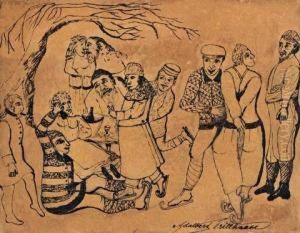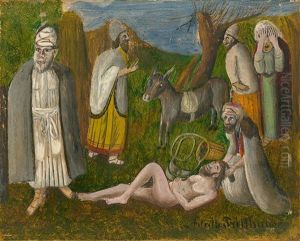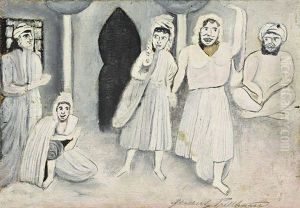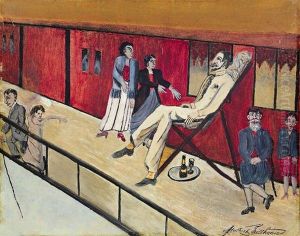Adalbert Trillhaase Paintings
Adalbert Trillhaase was a German painter and graphic artist born on January 18, 1858, in Erfurt, Germany. He was known for his diverse body of work, which included genre scenes, portraits, landscapes, and mythological subjects. Trillhaase's artistic journey began with his education at the Weimar Saxon-Grand Ducal Art School, where he studied from 1876 to 1880. His instructors included Theodor Hagen and Charles Verlat, and it was under their guidance that Trillhaase honed his skills in painting and drawing.
After completing his studies, Trillhaase spent time traveling and working in various European countries, including Italy and the Netherlands, which influenced his artistic style. His work during this period was characterized by a fascination with light and shadow, as well as a keen interest in capturing the essence of the human condition through his subjects. He was particularly adept at using a warm palette to convey depth and emotion in his paintings.
In the early 20th century, Trillhaase became associated with the German Symbolist movement, which sought to express the mystical and emotional aspects of human experience. His work from this period often features allegorical and fantastical elements, showcasing his ability to weave narrative and mystique into his compositions. Despite the changing artistic trends of the time, Trillhaase maintained a consistent focus on traditional craftsmanship and pictorial harmony.
Throughout his career, Adalbert Trillhaase exhibited his work at various venues, including the Great Berlin Art Exhibition and the Munich Glass Palace. His contributions to the art world were recognized by his peers and art enthusiasts alike. Trillhaase's legacy is that of an artist who bridged the gap between 19th-century romanticism and the modernist tendencies of the early 20th century.
Adalbert Trillhaase passed away on April 18, 1936, in Weimar, leaving behind a rich portfolio of artwork that continues to be appreciated for its technical proficiency and emotional resonance. Although not as widely known as some of his contemporaries, Trillhaase's work remains of interest to art historians and collectors who value the diversity and depth of German art from this period.










